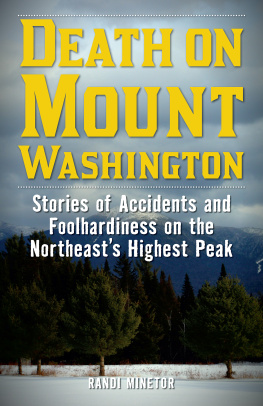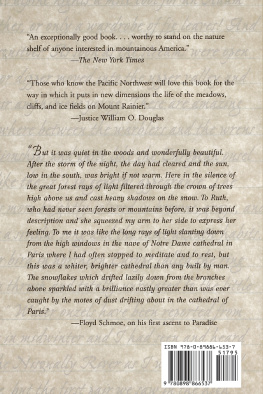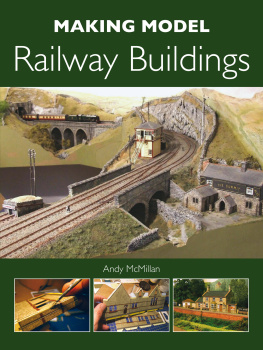
Published by The History Press
Charleston, SC 29403
www.historypress.net
Copyright 2011 by Bruce D. Heald, PhD
All rights reserved
Images are courtesy of the author unless otherwise noted.
First published 2011
e-book edition 2012
Manufactured in the United States
ISBN 978.1.61423.839.3
Library of Congress Cataloging-in-Publication Data
Heald, Bruce D., 1935
The Mount Washington Cog Railway : climbing the White Mountains of New Hampshire / Bruce D. Heald.
p. cm.
Includes bibliographical references and index.
print edition ISBN 978-1-60949-196-3
1. Mount Washington Cog Railway. 2. White Mountains (N.H. and Me.) I. Title.
TF688.M685H43 2011
385.6--dc22
2011000880
Notice: The information in this book is true and complete to the best of our knowledge. It is offered without guarantee on the part of the author or The History Press. The author and The History Press disclaim all liability in connection with the use of this book.
All rights reserved. No part of this book may be reproduced or transmitted in any form whatsoever without prior written permission from the publisher except in the case of brief quotations embodied in critical articles and reviews.
For all the visitors to New Hampshire who enjoy celebrating the White Mountains via the Mount Washington Cog Railway.
CONTENTS

The Mount Washington Cog Railway locomotive ascends Mount Washington.
INTRODUCTION
Superlatives can hardly render the magnificent views from the Presidential Range in the White Mountains. The romance of the ascent of Mount Washingtonvia the Cog Railway, the Auto Road or even hiking the wooded trailsis an adventure. Every mile of approach opens a new series of prospects, each of which has its own particular attraction and reveals the natural grandeur of its landscape. The different formations of the mountain ranges also call forth admiration of their scenic beautythe brilliance of the Presidential Range contrasted with the southern wilderness of the Sandwich Range.
It was Sylvester Marsh who had a dream of ascending Mount Washington by rail, a dream many thought impossible. For Mr. Marsh, impossible was not in his vocabulary. So he set forth to fulfill his quest: to build his Cog Railway up the mountain so tourists could enjoy the splendor of scenery from his railway and from the summit of Mount Washington.
During the 1850s, Sylvester Marsh, a retired businessman, proposed to build a railroad to the summit of Mount Washington. When the legislature granted him a charter, it included permission to build a railroad to the top of Mount Lafayette. A waggish solon proposed that he should also be given permission to build a railroad to the moon. The charter was granted in 1858, and work began eight years later. With the aid of Walter Aiken, who designed the cogwheel engine, a quarter mile of track was completed for a demonstration. This convinced the Boston, Concord & Montreal Railroad officials of the practicability of the scheme, and Marsh secured their financial assistance.
The process of building was very slow and required three years to complete. The entire stretch of three and a third miles was opened to the public on July 3, 1869, and has been in constant operation during the summer months ever since.
When the first season opened, it was Old Peppersass that left the base station for the ascent of the mountain. Old Peppersass was the first locomotive to ever climb the mountain. The odd little train of one car, pushed by an ungainly but powerful engine, began its ascent by a grade of one foot in three through a broad and straight clearing in the woods. Ahead were the towering shoulders of Mount Washington, while behind, through the opening panorama, was the western group of mountains. Gradually, the trees on either side began to thin out and become smaller until they no longer obscured the views north and south. Shortly, Jacobs Ladder, a long and massive trestle, was reached, and here the steepest grade of the trip was encountered. The tree line was passed, and the locomotive entered the region of subalpine vegetation.
Fantastic views opened on all sides of the rocky humps of Mount Clay, drawing near to the site of the Great Gulf tank. Soon, an awe-inspiring view of the bowl-shaped Great Gulf itself appeared, and beyond, Mount Washingtons nearest rival. The remainder of the trip was across a wide and comparatively flat area of gray and frost-splintered rocks with dull mosses and alpine flowers. The most magnificent display of color occurs when the early frost of autumn and the full ripening of leaves combine to produce a matchless pageantry of gold and scarlet, causing the spectacular vista on which the highlands are arrayed.
Reminisce for a moment about when the railroad was king of transportation during the late 1800s and the Boston, Concord & Montreal Railroad commanded the North Country. Later came the Boston & Maine Railroad, which traveled up the stately, pastoral Pemigewasset Valley to Franconia Notch or maybe over the highlands along the Ammonoosuc River to Fabyans and the base of Mount Washington.
This brief introduction of the marvels of Mount Washington is intended to celebrate the early folklore and legends of the White Mountains; the first settlers and early passenger trains to invade the landscape of the North Country; and the first paths and roads to the summit of Mount Washington, including the Cog Railway and the Auto (Carriage) Road. Here we shall examine Sylvester Marshs first proposal for a Cog Railway into the Granite State and the rail service to the summit of the mountain from 1869 to the present.
Finally, we will enjoy the natural splendor, the historic charm and the richness of the most beautiful scenery in the Northeast from the summit of Mount Washington. We will make a visit to a staffed observatory and the visitors center, as well as the famous Tip-Top House. The top of the mountain will be memorable, for we shall experience the 360-degree views. Well see hundreds of mountain peaks across three states and two countries and the possible shimmer of the faraway Atlantic Ocean.
A trip on the Cog up Mount Washington is more than an adventure; it is a virtual celebration of Natures beauty.
LEGEND, FOLKLORE AND ORIGIN OF MOUNT WASHINGTON
Early legends and myths of the White Mountains have been written by unnamed historians who have eloquently related them to us. Native Americans were natural storytellers. Seeing, as they did, an omen in every shifting shade of the clouds, a sign in the changing leaf, a token of beauty or ugliness in the different places of the wild and no rock or river, lake or mountain, valley or hillside that did not speak of some deed of valor or incident of love or hatred, these stories clung to their tongues and were told and retold to each succeeding generation. They were further kept alive by a name applied to a particular spot, which should always hint of the legend connected with it.
The Native Americans told their tales of bygone days with lowered voice and anxious mien, each myth fraught with the fantasy of natures solitude and each legend bordered with a tinge of the silver foam of spirituality.
The following example of Native American myth and legacy of spirituality is related to us by an unknown historian:
In olden times, from far and near have come the brave and fair red children of the wilderness, to offer, in wild, shadowy glens, their sacrifices of vengeance and love, and where their songs rose, with the echoes of the thundering waterfalls, to mingle with the roaring wind of the tempest cloud, upon the snowy-crowned rocks, there they reverently believed the Great Spirit listening with satisfaction to their tribute of esteem. When the first white settlers came here to climb to the top of this bald mountain, an old Indian, with his tomahawk of stone, flint-pointed arrow, and tanned war dress, from the skins of moose and bear, standing proudly erect, shook his head, and said, The Great Spirit dwells there; he covers steps above the green leaves with the darkness of the fire tempest. No footmarks are seen returning from his home in the clouds.
Next page











